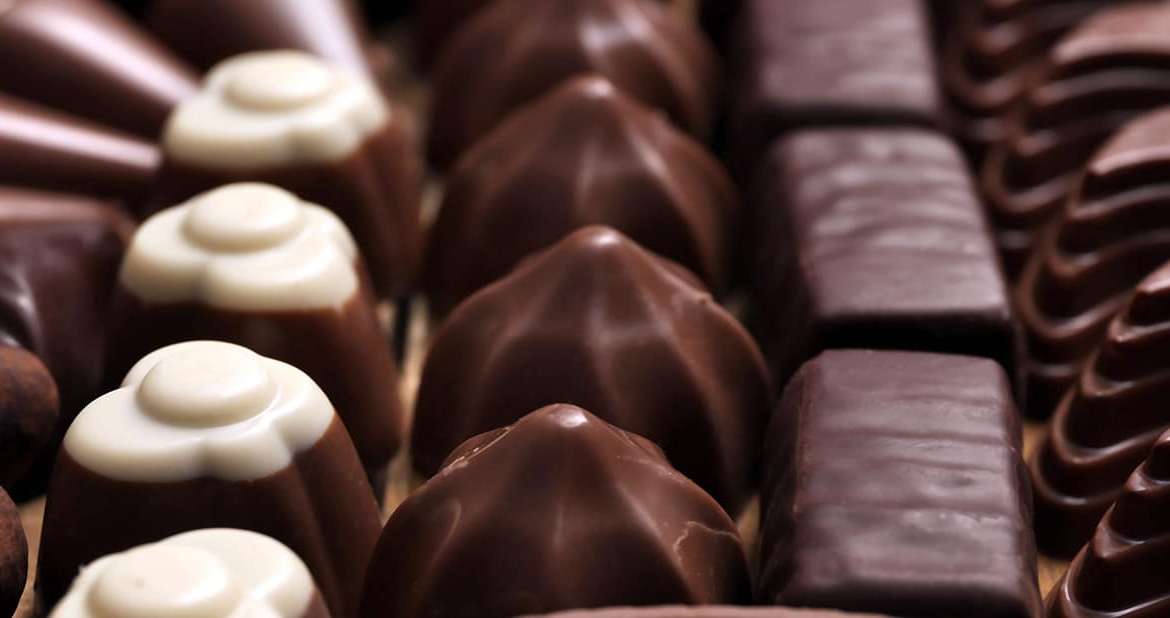What Is It?
- It takes 400 cocoa beans to make one pound of chocolate.
- Each cacao tree produces approximately 2,500 beans.
- Research to date supports that chocolate can be enjoyed as part of a balanced, heart-healthy diet and lifestyle.
- The average serving of milk chocolate has about the same amount of caffeine as a cup of decaf coffee.
- Because cacao trees are so delicate, farmers lose, on average, 30 percent of their crop each year.
- Studies have demonstrated that one of the major saturated fats in chocolate does not raise cholesterol like other hard fats–meaning chocolate can be enjoyed in moderation.
- Chocolate comes from a fruit tree; it’s made from a seed.
- Theobroma Cacao is the tree that produces cocoa beans, and it means “food of the gods.” Carolus Linnaeus, the father of plant taxonomy, named it.
Where Is It From?
- There are an estimated 1.5 million cocoa farms in West Africa.
- Most cocoa–70 percent–hails from West Africa.
- Cocoa is raised by hand, on small, family-owned farms.
- Cacao leaves can move 90 degrees, from horizontal to vertical, to get sun and to protect younger leaves.
- Some cacao trees are more than 200 years old, but most give marketable cocoa beans for only the first 25 years.
- The average size of a cocoa farm in West Africa is 7 to 10 acres.
- Rudolph Lindt designed the first conching machine, its bed curved like a conch shell.
- Cote d’Ivoire is the single largest producer of cocoa, providing roughly 40 percent of the world’s supply.
- Through some programs supported by industry and partners including foundations and governments, farmers are now earning between 20 percent and 55 percent more from their crops.
- Most cocoa farms are not owned by the companies that make chocolate.
Who Depends On It?
- Benjamin Franklin sold chocolate in his print shop in Philadelphia.
- The price of cocoa can fluctuate daily–affecting farmers’ incomes.
- Cacao beans were so valuable to early Mesoamericans that they were used as currency.
- The average West African cocoa family has eight members.
- An Indonesian cocoa farming community built a giant statue of hands holding a cocoa pod.
- In addition to tending cacao trees, family members may harvest bananas or other fruit crops.
- The ancients also fermented the pulp of the cacao pod to make other beverages.
- In November, Germans celebrate St. Martin–a knight who shared his cloak with a beggar–with a lantern-lit parade, sweets and steaming hot chocolate.
- Worldwide, 40 million to 50 million people depend upon cocoa for their livelihood.
- Spanish royalty gave cakes of cacao in their dowries.
- The Aztec emperor Montezuma drank 50 cups of cacao a day from a golden chalice.
Savor It
- It takes two to four days to make a single-serving chocolate bar.
- Chocolate contains two doses of cocoa butter—the natural amount from the bean, plus an extra dollop to bump up creaminess.
- Cacao percentage determines the amount of cocoa bean products by weight in a chocolate.
- “Cacao” is how you say “cocoa” in Spanish.
- Champagne and sparkling wines are too acidic to pair well with milk or dark chocolate. Try pairing a sweet bubbly with white chocolate and red wine with dark. In general you want to match the sweetness level of the wine with the sweetness level of the chocolate.
- Some cocoa certification programs are modeled on success with a similar product–coffee.
- Chocolate can make dogs and cats ill–meaning no tastings for your furry friend, and more for you.
- A farmer must wait four to five years for a cacao tree to produce its first beans.
- German chocolate cake was named for Sam German, who developed a sweet bar for Baker’s Chocolate–and was not from Germany.
- The French celebrate April Fool’s Day with chocolate-shaped fish, or “Poisson d’Avril.”
SOURCE | National Confectioners Association

